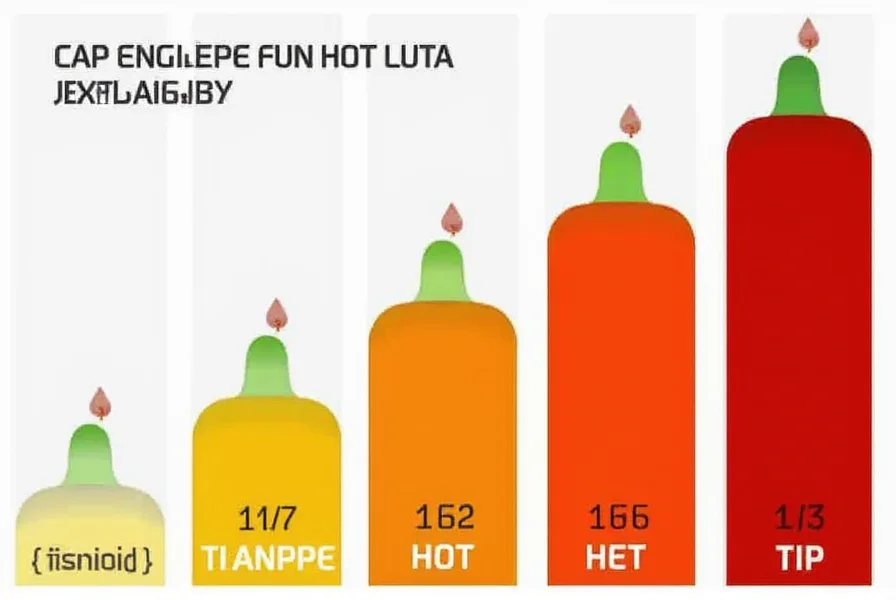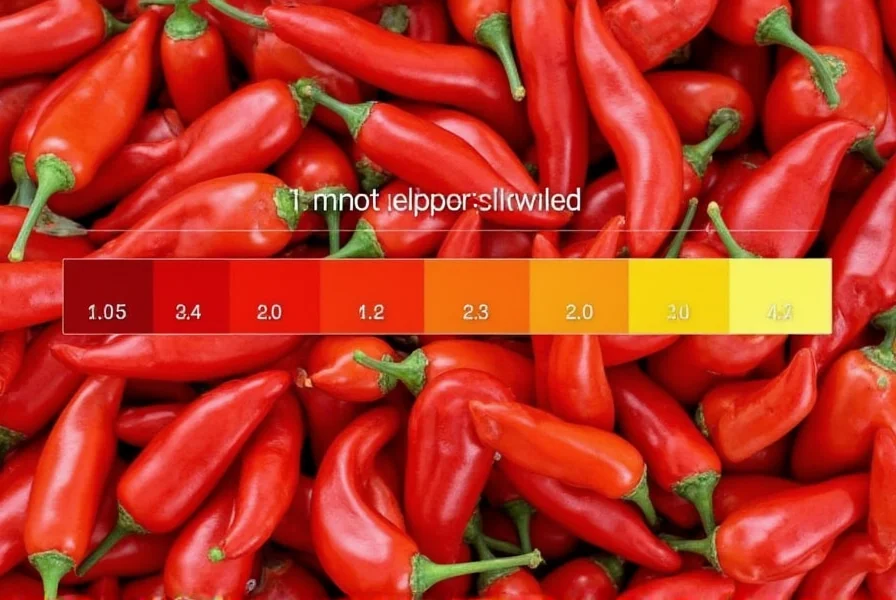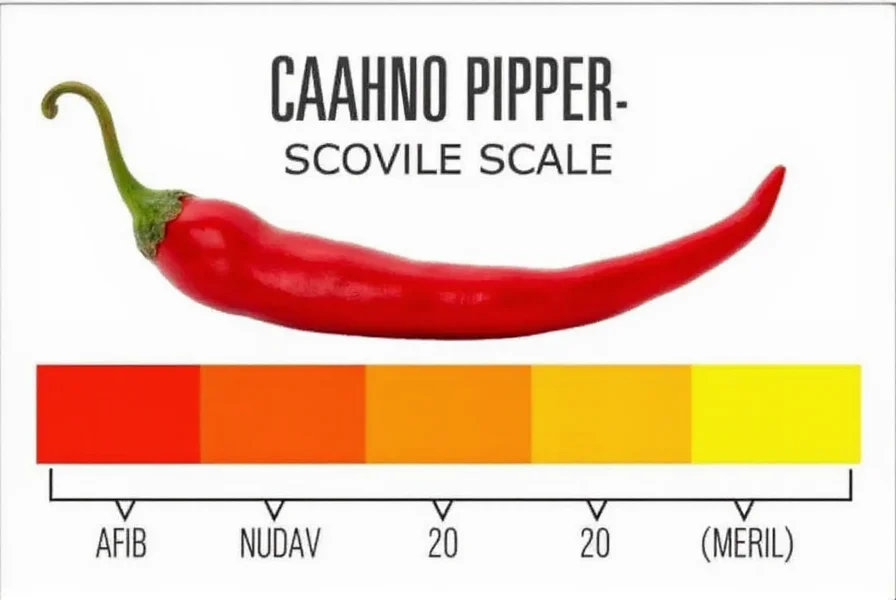Cayenne pepper's position on the Scoville scale makes it a versatile heat source in global cuisines. Unlike milder peppers that merely add flavor, cayenne delivers noticeable heat while still allowing other ingredients to shine through. This balance explains its popularity in everything from Cajun cooking to traditional Chinese medicine.
Understanding the Scoville Scale
Invented by pharmacist Wilbur Scoville in 1912, the Scoville Organoleptic Test originally measured pepper heat through human taste panels. Today, high-performance liquid chromatography (HPLC) provides precise measurements of capsaicinoids—the compounds responsible for heat in peppers. The results convert to Scoville Heat Units (SHU) for consumer understanding.
Modern testing reveals that cayenne pepper consistently falls within the 30,000-50,000 SHU range, though specific varieties and growing conditions can push some specimens to 75,000 SHU. This measurement represents the concentration of capsaicin, the primary heat-inducing chemical in chili peppers.
| Pepper Variety | Scoville Heat Units (SHU) | Heat Comparison |
|---|---|---|
| Bell Pepper | 0 SHU | No heat |
| Jalapeño | 2,500-8,000 SHU | Mild to medium |
| Cayenne Pepper | 30,000-50,000 SHU | Medium-hot |
| Habanero | 100,000-350,000 SHU | Very hot |
| Ghost Pepper | 855,000-1,041,427 SHU | Extremely hot |
Factors Affecting Cayenne Pepper Heat Level
Several elements influence where a specific cayenne pepper falls within its Scoville range:
- Growing conditions: Stressors like drought or temperature extremes increase capsaicin production
- Pepper maturity: Fully ripe red cayenne peppers tend to be hotter than younger green varieties
- Plant genetics: Different cayenne cultivars naturally produce varying heat levels
- Preparation method: Dried cayenne powder often tests hotter than fresh peppers due to concentration
When comparing cayenne pepper to red pepper flakes, note that commercial red pepper flakes typically contain a blend of peppers with varying heat levels, making pure cayenne more consistently hot. This consistency makes cayenne preferable for recipes requiring precise heat control.

Practical Applications of Cayenne's Heat Level
Cayenne's position on the Scoville scale makes it ideal for dishes requiring noticeable but manageable heat. Unlike extreme peppers that dominate a dish, cayenne enhances flavors while adding warmth. Professional chefs often use it in:
- Creole and Cajun seasoning blends (typically 1-2% cayenne)
- Marinades for meats where heat needs to penetrate without overwhelming
- Chocolate dishes where its heat complements cocoa's bitterness
- Preservation techniques where its antimicrobial properties help extend shelf life
When substituting cayenne for other peppers, remember that one teaspoon of cayenne powder equals approximately 12 fresh jalapeños in heat potential. For those sensitive to spice, start with 1/8 teaspoon and adjust gradually—cayenne's heat builds slowly but lasts longer than milder peppers.
Safety Considerations with Cayenne Pepper
Working with cayenne requires precautions due to its significant capsaicin content. Always:
- Wear gloves when handling fresh or dried cayenne
- Avoid touching your face, especially eyes, after handling
- Use ventilation when cooking with powdered cayenne to avoid inhalation
- Have dairy products nearby to neutralize accidental overexposure (milk, yogurt)
Interestingly, cayenne's heat level makes it effective for topical pain relief creams, typically formulated at 0.025%-0.075% capsaicin concentration. This medical application leverages the same compounds that make it valuable in cooking.

Comparing Cayenne to Similar Heat-Level Peppers
While cayenne pepper occupies a specific niche on the Scoville scale, several peppers share similar heat profiles:
- Tabasco peppers: 30,000-50,000 SHU (same range as cayenne, used in Tabasco sauce)
- Malagueta peppers: 30,000-60,000 SHU (popular in Brazilian cuisine)
- Thai hot peppers: 50,000-100,000 SHU (slightly hotter than most cayenne varieties)
The key difference lies in flavor profiles—cayenne offers a clean, straightforward heat with subtle berry notes, while Thai peppers deliver more floral notes and tabasco peppers provide vinegar-like tanginess. This flavor distinction matters more than minor Scoville differences when selecting peppers for specific dishes.
Measuring Heat in Your Kitchen
Without laboratory equipment, you can estimate relative heat levels through careful tasting:
- Start with small amounts (1/16 teaspoon of powder or tiny piece of fresh pepper)
- Wait 30-60 seconds before taking additional samples (heat builds gradually)
- Compare to known references (e.g., "this tastes about twice as hot as my usual jalapeños")
- Keep dairy products nearby to neutralize excessive heat
Remember that individual heat tolerance varies significantly—what seems mild to an experienced chili eater might overwhelm others. Always label dishes containing cayenne clearly, especially when serving guests with unknown spice tolerance.
Frequently Asked Questions
How does cayenne pepper compare to red pepper flakes on the Scoville scale?
Cayenne pepper measures 30,000-50,000 SHU as a pure spice, while commercial red pepper flakes typically range from 5,000-30,000 SHU since they contain a blend of milder peppers. Pure cayenne delivers more consistent and generally higher heat than standard red pepper flakes.
Is cayenne pepper hotter than a habanero?
No, cayenne pepper (30,000-50,000 SHU) is significantly milder than habanero peppers (100,000-350,000 SHU). Habaneros are approximately 2-10 times hotter than cayenne pepper, placing them in a completely different heat category on the Scoville scale.
How much hotter is cayenne pepper than a jalapeño?
Cayenne pepper is typically 6-20 times hotter than jalapeños. While jalapeños measure 2,500-8,000 SHU, cayenne ranges from 30,000-50,000 SHU. This means even a small amount of cayenne delivers significantly more heat than a whole jalapeño pepper.
Does the form of cayenne affect its Scoville rating?
Yes, dried cayenne powder often tests hotter than fresh cayenne peppers due to water removal concentrating the capsaicin. Fresh cayenne typically measures 30,000-45,000 SHU, while dried powder can reach 45,000-50,000 SHU or higher depending on processing methods.











 浙公网安备
33010002000092号
浙公网安备
33010002000092号 浙B2-20120091-4
浙B2-20120091-4